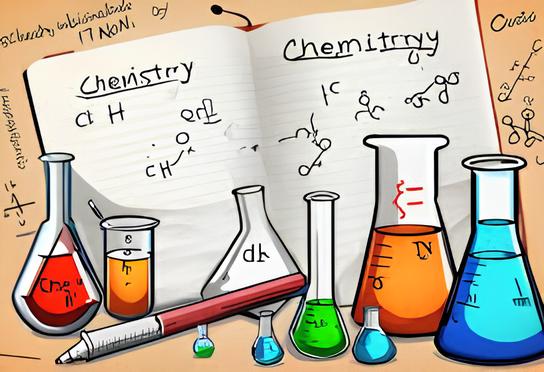JAMB Biology Note: Humans and Environment
1. Diseases
Table of Contents
- 1. Diseases
- Topic: Pollution, Sanitation, Conservation, Game Reserves, and National Parks
1. Common and Endemic Diseases
Common Endemic Diseases in Nigeria
- Malaria: Caused by Plasmodium species and transmitted by Anopheles mosquitoes.
- Meningitis: Caused by Neisseria meningitidis bacteria, often linked to overcrowding and dry conditions.
- Cholera: Caused by Vibrio cholerae bacteria, transmitted through contaminated water and food.
- Typhoid Fever: Caused by Salmonella typhi bacteria, spread through contaminated water and poor sanitation.
- Schistosomiasis: Caused by Schistosoma parasites, transmitted via water contaminated with infected snails.
- Onchocerciasis (River Blindness): Caused by Onchocerca volvulus worms, transmitted by blackflies.
2. Easily Transmissible Diseases and Disease Syndromes
Poliomyelitis (Polio)
- Causative Organism: Poliovirus.
- Transmission: Fecal-oral route, through contaminated water or food.
- Symptoms: Fever, fatigue, stiffness, paralysis in severe cases.
- Prevention/Control: Vaccination, improved sanitation, and hygiene.
Cholera
- Causative Organism: Vibrio cholerae.
- Transmission: Contaminated water or food.
- Symptoms: Severe diarrhea, dehydration, and death if untreated.
- Prevention/Control: Access to clean water, proper sanitation, and oral vaccines.
Tuberculosis (TB)
- Causative Organism: Mycobacterium tuberculosis.
- Transmission: Airborne droplets from an infected person’s cough or sneeze.
- Symptoms: Chronic cough, fever, weight loss, and night sweats.
- Prevention/Control: Vaccination (BCG), early diagnosis, and treatment with antibiotics.
Sexually Transmitted Diseases (STDs)
- Gonorrhea: Caused by Neisseria gonorrhoeae.
- Syphilis: Caused by Treponema pallidum.
- AIDS: Caused by the Human Immunodeficiency Virus (HIV).
- Transmission: Sexual contact, sharing of needles, blood transfusion, or from mother to child.
- Symptoms:
- Gonorrhea: Painful urination, discharge.
- Syphilis: Painless sores, rashes, organ damage in later stages.
- AIDS: Weak immune system, recurrent infections.
- Prevention/Control:
- Safe sex practices, use of condoms.
- Screening and treatment of infections.
- Anti-retroviral therapy for HIV/AIDS.
3. Ecological Conditions Favoring Disease Spread
Malaria
- Ecological Factors: Warm, humid climates with stagnant water where Anopheles mosquitoes breed.
- Control: Elimination of breeding sites, use of insecticide-treated nets (ITNs), and spraying of insecticides.
Cholera and Typhoid Fever
- Ecological Factors: Poor sanitation, contaminated water sources.
- Control: Provision of clean water, proper disposal of waste, and hygiene education.
Meningitis
- Ecological Factors: Crowded living conditions, dry season.
- Control: Vaccination, improved living conditions, and public health awareness.
Schistosomiasis
- Ecological Factors: Human activities in contaminated freshwater, such as fishing or washing clothes.
- Control: Avoiding infested water, snail control, and proper treatment of infected individuals.
4. Biology of Disease Vectors and Control
- Mosquito (Malaria):
- Lifecycle involves stagnant water for egg-laying.
- Control: Eliminating stagnant water, use of mosquito repellents, and ITNs.
- Blackfly (Onchocerciasis):
- Breeds near fast-flowing rivers.
- Control: Spraying rivers with larvicides, treating infected individuals with ivermectin.
- Snails (Schistosomiasis):
- Intermediate hosts for Schistosoma parasites.
- Control: Use of molluscicides, avoiding infested waters, and health education.
5. Principles of Inoculation and Vaccination
Inoculation
- The introduction of a weakened or dead form of a pathogen to stimulate the body’s immune response.
Vaccination
- The process of administering a vaccine to provide immunity against a disease.
- Examples:
- BCG vaccine for TB.
- Oral polio vaccine for poliomyelitis.
- Cholera vaccine for cholera prevention.
Topic: Pollution, Sanitation, Conservation, Game Reserves, and National Parks
1. Pollution and Its Control
Definition of Pollution
Pollution is the introduction of harmful substances or energy into the environment, causing negative effects on living organisms and the ecosystem.
Types and Sources of Pollution
- Air Pollution: Contamination of the atmosphere by harmful gases (e.g., carbon monoxide, sulfur dioxide), smoke, or particulates from vehicles, industries, and burning of fossil fuels.
- Water Pollution: The introduction of harmful substances into water bodies, such as oil spills, sewage, agricultural runoff, and industrial waste.
- Soil Pollution: Degradation of soil due to the presence of chemicals, heavy metals, or waste materials from industrial or agricultural activities.
Effects of Pollution
- Air Pollution:
- Health: Causes respiratory diseases like asthma and bronchitis.
- Environment: Leads to acid rain, global warming, and depletion of the ozone layer.
- Water Pollution:
- Health: Causes waterborne diseases such as cholera and typhoid.
- Environment: Destroys aquatic life and reduces biodiversity.
- Soil Pollution:
- Health: Ingested toxins through crops grown on polluted soil.
- Environment: Reduces soil fertility, leading to desertification.
Methods of Controlling Pollution
- Air Pollution: Use renewable energy sources, plant trees, and enforce emissions regulations.
- Water Pollution: Treat industrial wastewater, prevent oil spills, and ensure proper sewage disposal.
- Soil Pollution: Promote organic farming, recycle waste, and use biodegradable materials.
2. Sanitation and Sewage
Definition of Sanitation
Sanitation refers to the proper management of waste, including solid waste, sewage, and human excreta, to maintain hygiene and prevent disease.
Importance of Sanitation
- Prevents the spread of diseases like cholera and dysentery.
- Promotes community health and enhances quality of life.
- Reduces water and soil pollution.
Roles of National and International Health Agencies
- World Health Organization (WHO): Implements global health standards and provides vaccinations.
- UNICEF: Focuses on clean water, sanitation, and hygiene for children.
- National Ministries of Health and Environment: Develops and enforces health policies.
3. Conservation of Natural Resources
Definition of Conservation
Conservation is the sustainable use and protection of natural resources to ensure their availability for future generations.
Methods of Conservation
- Renewable Resources: Reforestation, crop rotation, and water conservation.
- Non-Renewable Resources: Recycling, reducing consumption, and exploring alternative energy sources.
Benefits of Conservation
- Preserves biodiversity and prevents species extinction.
- Ensures a balanced ecosystem and mitigates climate change.
- Prevents desertification and promotes sustainable development.
Organizations Responsible for Conservation
- Nigerian Conservation Foundation (NCF): Protects endangered species and promotes environmental education.
- World Wildlife Foundation (WWF): Conserves wildlife and natural habitats globally.
- United Nations Environmental Programme (UNEP): Addresses global environmental issues.
4. Game Reserves and National Parks in Nigeria
Definition of Game Reserves and National Parks
Game reserves are areas designated for the protection of wildlife, where hunting and other activities are controlled. National parks are protected areas established for conserving wildlife and promoting tourism and research.
Locations of Major Game Reserves and National Parks
- Yankari National Park (Bauchi State)
- Kainji Lake National Park (Niger/Kwara States)
- Gashaka-Gumti National Park (Adamawa/Taraba States)
Importance of Game Reserves and National Parks
- Protect endangered species and conserve biodiversity.
- Promote ecotourism and generate revenue.
- Serve as research and educational centers for environmental studies.






